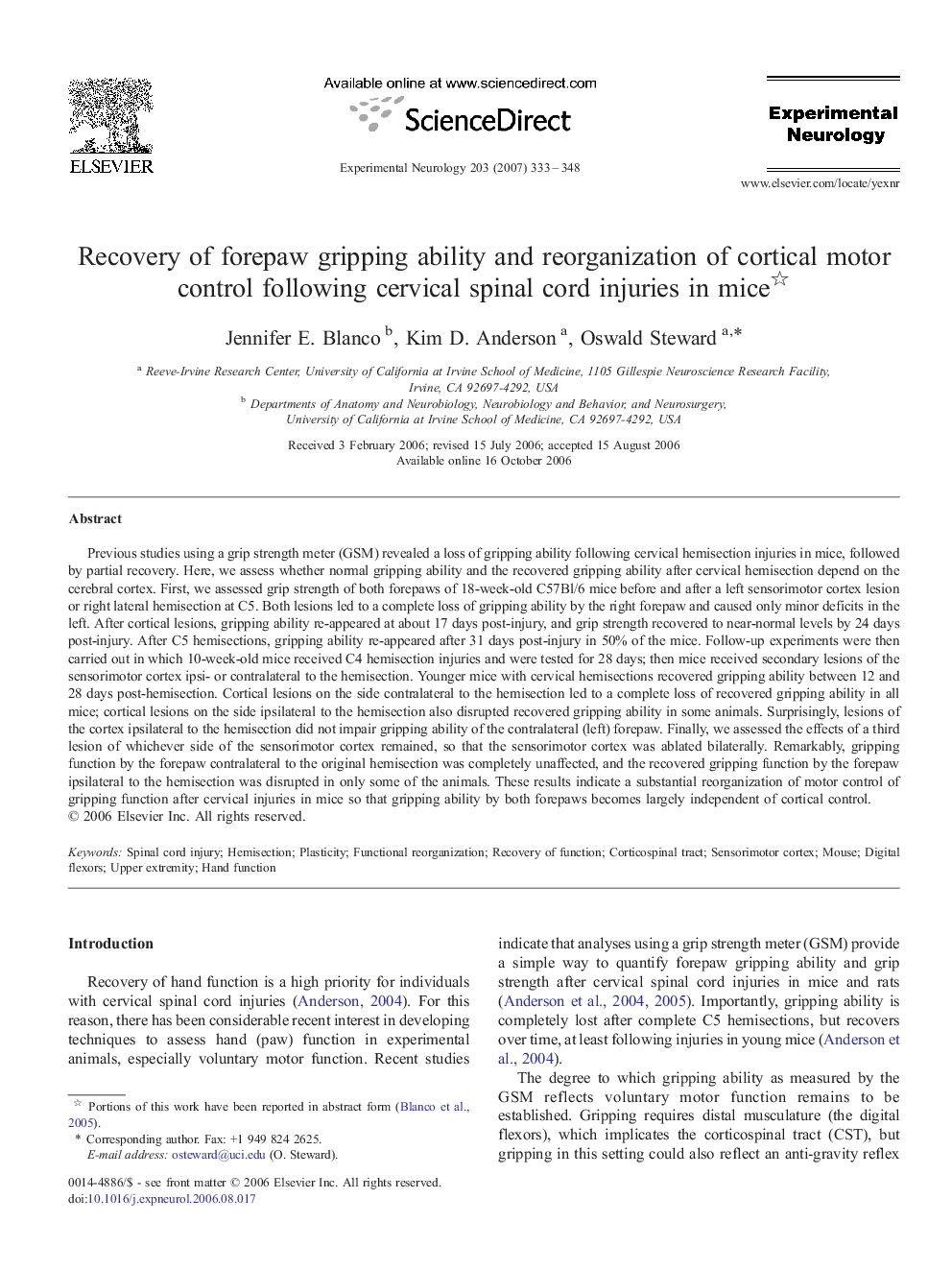| کد مقاله | کد نشریه | سال انتشار | مقاله انگلیسی | نسخه تمام متن |
|---|---|---|---|---|
| 3057291 | 1186594 | 2007 | 16 صفحه PDF | دانلود رایگان |

Previous studies using a grip strength meter (GSM) revealed a loss of gripping ability following cervical hemisection injuries in mice, followed by partial recovery. Here, we assess whether normal gripping ability and the recovered gripping ability after cervical hemisection depend on the cerebral cortex. First, we assessed grip strength of both forepaws of 18-week-old C57Bl/6 mice before and after a left sensorimotor cortex lesion or right lateral hemisection at C5. Both lesions led to a complete loss of gripping ability by the right forepaw and caused only minor deficits in the left. After cortical lesions, gripping ability re-appeared at about 17 days post-injury, and grip strength recovered to near-normal levels by 24 days post-injury. After C5 hemisections, gripping ability re-appeared after 31 days post-injury in 50% of the mice. Follow-up experiments were then carried out in which 10-week-old mice received C4 hemisection injuries and were tested for 28 days; then mice received secondary lesions of the sensorimotor cortex ipsi- or contralateral to the hemisection. Younger mice with cervical hemisections recovered gripping ability between 12 and 28 days post-hemisection. Cortical lesions on the side contralateral to the hemisection led to a complete loss of recovered gripping ability in all mice; cortical lesions on the side ipsilateral to the hemisection also disrupted recovered gripping ability in some animals. Surprisingly, lesions of the cortex ipsilateral to the hemisection did not impair gripping ability of the contralateral (left) forepaw. Finally, we assessed the effects of a third lesion of whichever side of the sensorimotor cortex remained, so that the sensorimotor cortex was ablated bilaterally. Remarkably, gripping function by the forepaw contralateral to the original hemisection was completely unaffected, and the recovered gripping function by the forepaw ipsilateral to the hemisection was disrupted in only some of the animals. These results indicate a substantial reorganization of motor control of gripping function after cervical injuries in mice so that gripping ability by both forepaws becomes largely independent of cortical control.
Journal: Experimental Neurology - Volume 203, Issue 2, February 2007, Pages 333–348